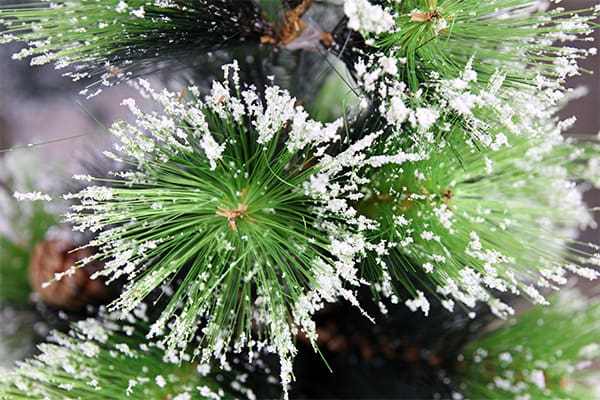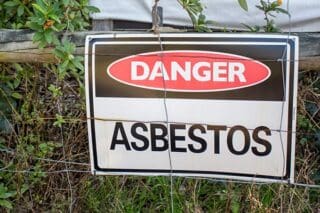
People across the United States dream of winter holidays filled with fresh, powdery snow. Depending on where they live, only some get the chance to experience it, though. To fulfill that dream of a white Christmas, companies started making fake snow alternatives in the early 1900s, some that used asbestos.
Hollywood quickly jumped on board, famously using asbestos for fake snow in many movies, including The Wizard of Oz, Holiday Inn and It’s a Wonderful Life. But there was an even more widespread use: fake snow made from asbestos for holiday decorations.
The Origins of Asbestos Snow
During the 1920s, many people used cotton batting to create the appearance of snow. However, a firefighter noted in 1928 that using cotton could be a fire hazard.
So, manufacturers started looking for realistic-looking alternatives. For example, they considered salt and flour. In the end, the fire-resistant nature of asbestos made it a favored choice.
The white color and texture of asbestos-containing fake snow made it a popular choice to flock a Christmas tree. Sold under brand names like Snow Drift and Pure White, asbestos-containing fake snow lets families have a festive white Christmas.
Retailers sold these boxes from the 1930s to the 1960s, when the dangers of asbestos became public. But sales dipped at the outbreak of World War II when the Navy needed large amounts of asbestos for ship construction.
How Do You Know if Your Decorations Have Asbestos?
If you have vintage decorations, it’s possible that they contain asbestos. Some of these decorations may have been made with the mineral. Others may not be asbestos products, but may have come into contact with the fake snow. If so, they may have a dusting of the mineral’s microscopic fibers.
Any asbestos exposure can be dangerous and may lead to asbestos cancers and mesothelioma. So, if your antique ornaments have, or may have contacted, fake snow, it’s best to get rid of them. Newer ornaments may not have the same sentimental meaning, but they should be free from asbestos.
Hollywood Lets Asbestos Snow Fall
Hollywood notoriously used asbestos as fake snow for many movies. Film production crews are not considered high-risk occupations for asbestos exposure. However, they did use the mineral as fake snow after other materials proved less realistic. For example, set dressers used white-colored corn flakes to simulate snow. But, they were so noisy that film producers had to dub the actors’ voices over the crunching as they walked.
One of the most famous films was The Wizard of Oz. After falling asleep in the poppy field because of the Wicked Witch’s spell, Dorothy is awoken by a magic spell cast by Glinda the Good Witch. This spell caused it to snow. That snow was asbestos.
That’s not the only place where asbestos appeared on the silver screen. A run of classic holiday movies started in 1942, and many used asbestos to simulate snow. For example, the film Holiday Inn, which introduced the song “White Christmas,” used asbestos for fake snow in the final scene.
It’s a Wonderful Life, starring Jimmy Stewart, primarily used foamite. This fake snow is a foam similar to what fire extinguishers use. However, the filmmakers also used asbestos on set as snow. To bring the holiday season to life, the crew dressed the set using asbestos.
What’s Used for Fake Snow Today?
Fake snow has evolved over the years. Fortunately, filmmakers no longer use asbestos, preferring safer options. Instead, they bring in real snow or use computer-generated images to create realistic falling snow. Another option, SnowCel, is made from fine bits of paper.
To safely make the holiday season feel a bit snowier, various sprays using non-toxic polymers can bring a lovely festive feel to the holidays. So, families have options to choose from while staying safe from asbestos.




